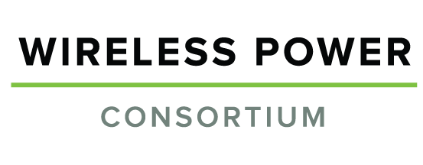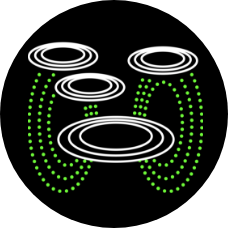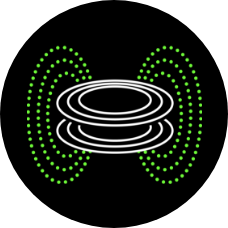Inductive charging vs. resonant charging.
Tesla’s pioneering experiments paved the way for both
resonant and inductive wireless charging methods.
Resonant wireless charging
relies on a high-frequency oscillating magnetic field transferring energy between two coils operating at a common resonant frequency.
The techniques were developed in parallel and have different benefits and drawbacks. Resonant charging covers greater distances and doesn’t require the tight alignment that inductive does. The drawback of resonant is that coils are bigger, making the system more expensive.
Inductive wireless charging
creates a relatively low-frequency oscillating field to transfer power between non-resonant but closely coupled coils.
One benefit of inductive charging is that it’s highly reliable when the device and the charging pad are in direct contact. Its widespread adoption is another of this method’s pros. Drawbacks include slower charging and the necessity for the device charging to be in close proximity to the charging pad.
Setting wireless charging standards.
The Wireless Power Consortium (WPC) is a group of tech industry leaders founded in 2008, and currently includes heavyweight partners such as Apple, Samsung, Nokia,Sony, and Belkin. Its aim was to create a universal standard for wireless charging that would be compatible with a wide array of devices, from smartphones to wearables. The WPC supported the Qi (pronounced chee) wireless charging standard.
Qi comes from the Chinese word 气 qi; traditional Chinese: 氣 meaning vital energy. Since its introduction, the Qi standard has undergone multiple iterations, improving efficiency, and reducing charging times. Achieving Qi certification recognizes that a device works properly and is safe to operate. During the technology’s evolution, Belkin has been a leader in designing accessories with the Qi charging standard.

For tech enthusiasts
But the charging landscape changed dramatically with the advent of this tangle-free experience. In 2015, Belkin joined the WPC and the following year, we released our first Qi-certified charger. Since then, Qi has steadily improved, and today it’s the gold standard for wireless charging, setting the benchmark for compatibility and performance. Qi’s superpowers are its versatility and reliability, and it’s widely adopted in smartphones, earbuds, AirPods, and other devices.
For tech enthusiasts
MagSafe’s bells and whistles add magnets to the mix for a physically tighter connection. Its magnetized connector on the back of the iPhone allows the phone to snap into place precisely on a MagSafe charger, making it convenient to align and charge compared to traditional Qi charging. In addition to magnetics, another MagSafe superpower is its faster charging speeds versus most Qi charging pads, and some models are able to deliver up to 15 watts of power.
For tech enthusiasts
The WPC plans to mandate magnetic elements including strength and magnet strength will be one of the elements tested as part of the certification process. Because there’s currently no standard of magnetic hold with magnetic Qi products, you should only buy from trusted brands.
For tech enthusiasts
One of Qi2’s superpowers is supporting higher Power Delivery "far-field" charging, supplying up to 100 watts of power. This permits simultaneous charging of multiple devices and powering more energy-intensive electronics like laptops and tablets. However, the 100 watts of power is not yet available for wireless charging of smartphones. Another key improvement is the introduction of "mid-field" charging, which allows for charging at up to 15 watts without direct contact between charger and device. This application is great for devices like earbuds and smartwatches that tend to have small charging pads.
Other enhancements are faster charging speeds, improved efficiency, and advancements toward universal compatibility. True universal compatibility will be realized once other devices adopt the Qi2 standard and this list compiles current compatible devices. Universal compatibility will eliminate the need for separate chargers and ensure users can charge multiple devices with the same charging pad or stand without worrying about standards and protocols. By optimizing power transfer, Qi2 improves efficiency, enabling devices to quickly charge without compromising energy consumption. The technology’s futuristic design eclipses predecessors in the speed, convenience, and efficiency departments.
Future trends in wireless charging technology.
As wireless charging technology continues to evolve, it’s projected to increasingly integrate into our lives in ever more seamless ways. Developers are working on advancements in longer-range charging and more eco-friendly solutions. Potential developments include wirelessly charging electric vehicles and designing in-display or in-table charging. With this technology, power can be transmitted through the screen or surface of a table.
This eliminates requiring physical charging ports altogether and would make devices even more seamless and convenient. Moving forward, the WPC is also focusing on improving the safety and security of wireless charging technology. Proper certifications that correlate with charging standards are a key component. As devices become more powerful and charge faster, it's critical to employ safety measures to prevent overheating, electromagnetic interference, and other potential hazards.
Shop our latest Qi2 wireless chargers.
*Based on internal testing. Belkin Qi2 15W wireless charger charges iPhone 15 from 0-50% up to 2x faster than a Qi 5W wireless charger and up to 1.5x faster than a Qi 7.5W wireless charger. Charge time varies with environmental factors; results may vary.













